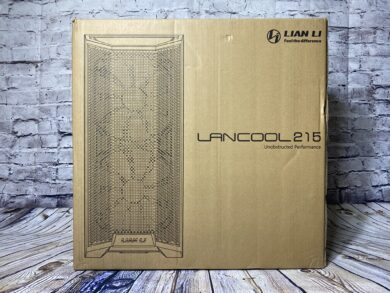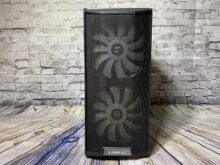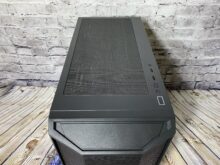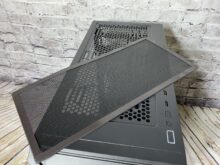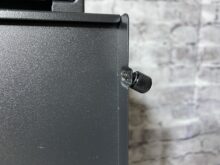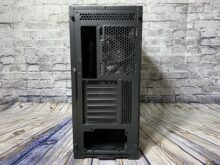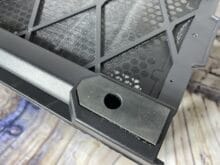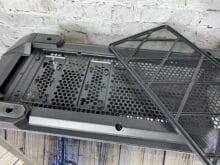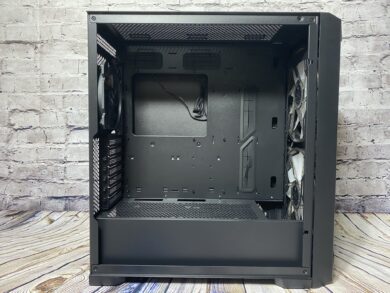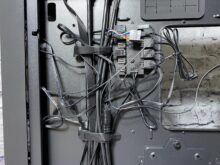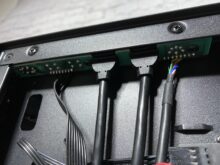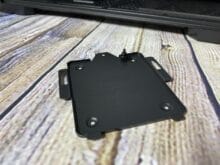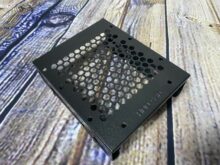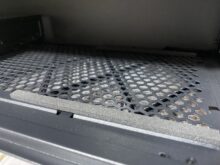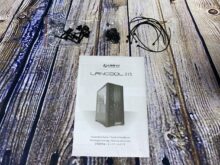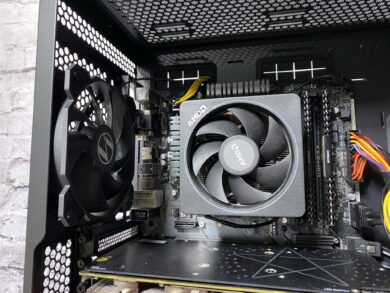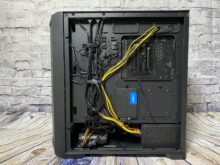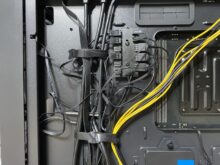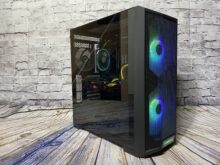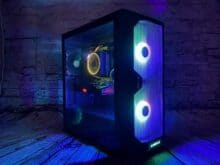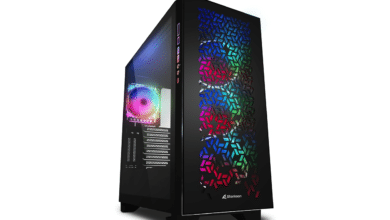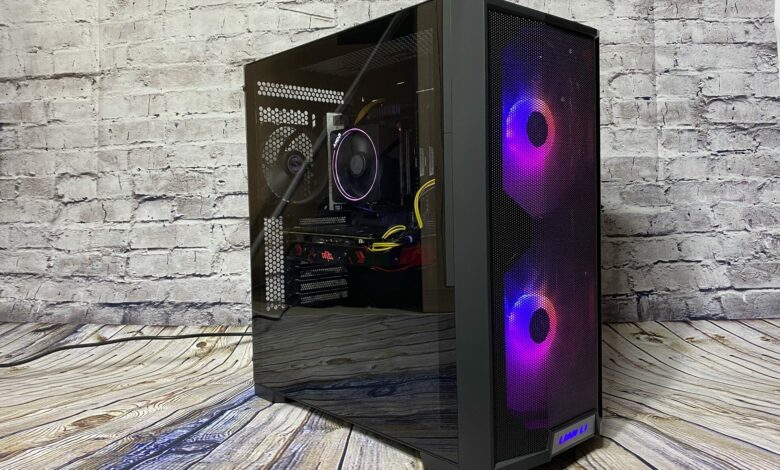
The Lancool 215 is the new midi tower from Lian Li. With this tower, Lian Li not only wants to bring a breath of fresh air into the case, but also refresh the case market. With a large mesh grille front and the very large 200 mm RGB fans behind it, this targeted goal should succeed. However, this is not the only thing that the midi tower from Lian Li has to offer. Good airflow, good visibility into the case and a chic design are also on the list.
In the following review, we will go into the other points. How well does the Lian Li Lancool 215 perform when installing our test components and how is the cable management in the rear part of the case organized? How does the front with the very large RGB fans work in operation and does it bring enough fresh air inside the case? You can find out about this and more in our review.
Technical data
| Model | LANCOOL 215 |
| Dimensions (D x W x H) | 462 mm x 215 mm x 482 mm |
| Material | 0.75 mm SGCC & 4.0 mm tempered glass |
| Color | Black |
| Mainboard | E-ATX(under 280 mm)/ATX/M-ATX/ITX |
| Slots | 7 |
| HDD/SSD Support | 2 x 2.5″ SSD and 2 x 3.5″ HDD |
| Front I/O ports | Power button; Reset button; LED button; 1 x HD AUDIO; 2 x USB 3.0 |
| Lighting | ARGB |
| Fan | 2 x 200 mm 3-PIN 800 RPM ARGB fans (front) 1x 120 mm 3-PIN 1100 RPM fan |
| Fan Support | Front: 2 x 140 mm or 3 x 120 mm Top: 2 x 120 mm or 2 x 140 mm Above PSU chamber: 2 x 120 mm |
| Radiator Support | Front: 1 x 280/360 mm Top: 1 x 240 / 280 mm |
| VGA length | 370 mm |
| CPU Clearance | 166 mm |
| Dust filter | 1 x top (magnetic), 1 x bottom (tray) |
| Price | € 105.27 * |


Exterior impression
Delivered is the Lian Li Lancool 215 as always in a classic brown box. From the outside we can already see what is inside. After the case has been pulled out of the box, we can already see how it has been secured, also in the classic way via two styrofoam supports and plastic films.
Freed from all the packaging, we can now take a look at the case for the first time. At first glance, the case looks solid and visually coherent. Due to the size, not only the front fans are conspicuous, but also the glass side – this looks particularly successful! The glass pane has a small black edge and thus you have a great view into the inside of the case. It can be removed by loosening two screws at the back and then sliding the pane out to the back.

Now let’s take a look at the front of the case. The mesh grille is on a plastic part that protrudes away from the front and has an angular shape. You can also remove this front by grabbing it from below and pulling it off with a small jerk to the front. At the bottom is Lian Li’s lettering in white with a gray background. The lettering is white, as it can also glow. Behind that are then the aforementioned 200mm fans. They are decent sized, white and have the Lian Li logo in the middle. Unfortunately, there is no dust filter between the mesh grille and fans.
From the top, the Lancool 215 resembles many other cases. There is a large magnetic dust filter there. Below this, two fans in 120 mm and 140 mm variants can be optionally attached. However, the position of the front I/O ports is different here. This is not aligned to the front, as with many other cases, but to the rear. From the front, there is a power button, a reset button, an LED button, two USB ports and an HD audio port. Everything looks solid and well-made.
The other side of the case is less spectacular, as it consists of a large black side panel. This, like the glass panel, is attached with two screws at the back and can be removed out the back. The rails work well and so the sidepanel can be attached back to the case very easily.
Let’s now take a closer look at the back. Again, we don’t find anything spectacularly new on the outside. Under the fan cutout, for a 120 mm fan, we have a total of seven PCI solt panels. To the right, we see a vertically arranged rectangle, which serves for ventilation. A vertical PCI slot bracket could have been placed at this point as well.
On the bottom we find something special again. Here we find a dust filter that doesn’t quite match the rest of the case visually, but that isn’t noticeable during use anyway. This is particularly large and stretches across the entire underside of the case – whether this is necessary on the underside in this size can be doubted. The feet are made of hard plastic and are equipped with anti-slip pads, which are also decently large here.
Interior impression
From the outside, we now have a good look. Let’s now unscrew the Lian Li Lancool 215 and take a look inside. Around the bracket for the motherboard, we find a total of four cable grommets with rubber sheaths again for the cabling. These are also quite large and should make wiring the components easy later on. To the left of the rear panel is another fan, this one is black and without RGB lighting.
There are also two smaller holes above the PSU bay for the cables to pass through. These are featured without an edge protector and are comparatively small. In front of them are a lot of ventilation holes, which, like everything else on the case, are designed in a honeycomb grid pattern. Towards the glass panel, the PSU bay has no particular design, so it’s simply black.
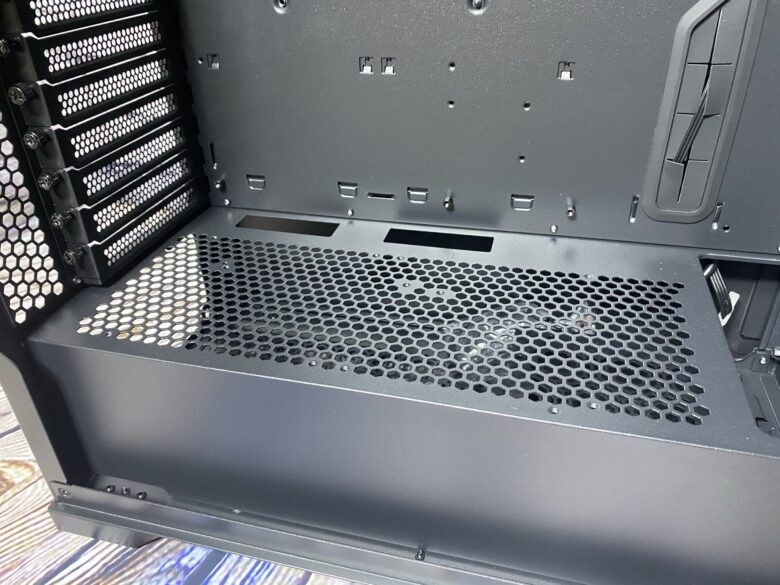
Facing the front of the case, we see how the end of the PSU bay ends and the front fans begin. A maximum of one 360mm radiator can be mounted in this space. The nice thing here is that there is enough room to fit the radiator with fans from both sides. This way, the radiator can be cooled twice without any problems – a little something that we don’t find in every case and that’s why it’s very nice!

On the back, after removing the side panel, we see a lot of space for cabling. On the left side, we have already pre-mounted a pre-fabricated cable rail for this purpose. The cables were fixed to the case with three simple Velcro fasteners. Directly to the right of the cables is an RGB controller with which you can control a total of six fans.
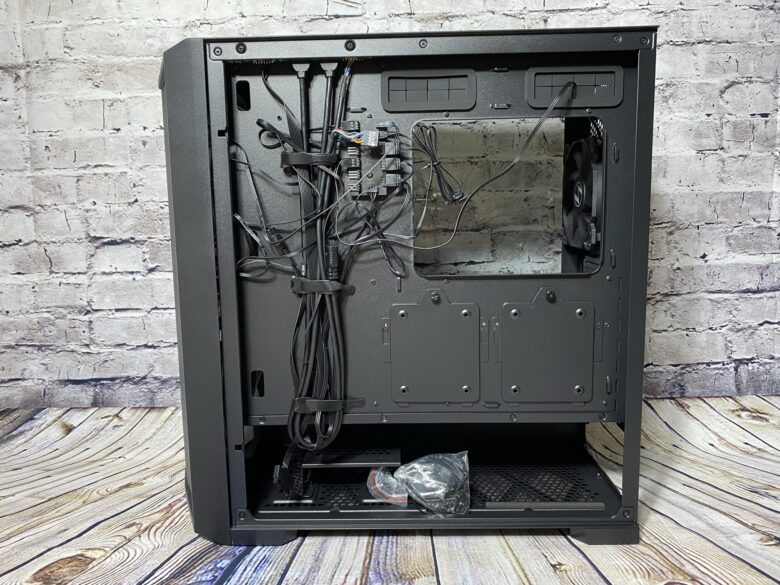
The origin of the cables can be found at the upper edge. The board from the front I/O ports is hidden there. We think the lateral position is very well solved, as it makes it easy to take more cables out of sight inside. For mounting 2.5″ SSDs, we have two rails under the mainboard recess. These are slid in and can be removed with one screw each.
At the very bottom, we then find an HDD rail on the left, which is designed for two 3.5″ HDDs. This can be removed at will. To do so, you have to loosen four screws on the case’s underside and then slide the rail out like everything. Inside the rail were the inserts for the case. There was a classic manual, screws and simple black cable ties here. To the right, there is enough space for the power supply. It’s nice here that the power supply has a small protection again. There are two foam strips on the bottom where you put the power supply.
Assembly
For assembly, we installed the following PC components into the Lian Li Lancool 215:
- AMD Ryzen 3 2200G with RadeonTM VegaTM graphics card
- AMD Wraith Prism LED RGB fan
- Asrock B450M Pro4-F
- Corsair Vengeance LPX 2x 8GB DDR4 2400MHz C14 XMP
- PowerColor AXRX580 8GBD5-3DHG/OC Graphics Card, 8GB Memory gray
- HKC V-Power 650W
- Crucial BX500 240GB
- Seagate Constellation ES.3 HDD 3.5″ 3TB SATA III 128MB 7200U/min
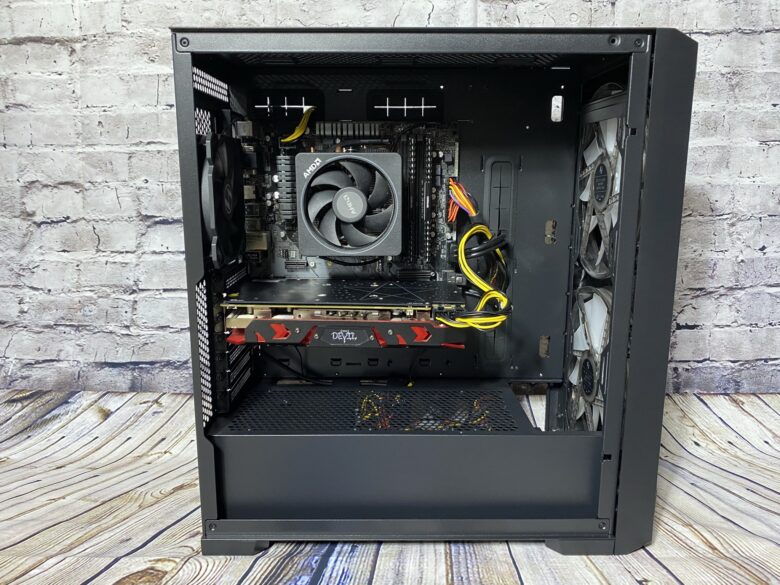
The assembly went pretty well on the whole. The side panels opened very easily and didn’t jam either. However, one screw was stuck so tightly in the bracket that the thread of the screw broke and you couldn’t easily remove the side panel. With a screwdriver and a small lever action, the screw could be loosened afterwards. Apart from that, all screws could be loosened and also fastened again without any problems. In such a case, one can of course also turn to the RMA of the dealer or manufacturer.
The motherboard fits very well in its intended position and screws well to the case. The pre-mounted fan doesn’t interfere with the installation either. All cables can be led from the back to the mainboard, at no point were the cables too short during our test. The rubber sheaths sit tightly on the case and enclose the cables tightly.
The PSU sits particularly well in its position, the small foam strips are really useful in that spot. The SSDs as well as HDDs mount neatly well, as you would expect, and also have no wiggle room. Since the fans are pre-mounted, we don’t have to mention them anymore. But also for the mounting of a radiator at the front was thought of. For the total of three additional fans, we have three small holes through which we can lead the cables of the fans to the rear. However, these are clearly visible without mounting a fan due to their size.
Cooling
How does the cooling of the Lian Li Lancool 215 look in practice? In order to ensure a comparable test, we only used the included fans. We loaded our system using Prime45 and FurMark for a 30-minute interval. The room temperature was ~22°C during this. In the following table you can see our results compared to another case we tested with the same components:
| Fan performance | Temperature CPU | Temperature GPU |
| Lian Li Lancool 215: 5V without load | 27 °C | 27 °C |
| Lian Li Lancool 215: 12V with load | 72 °C | 75 °C |
| Thermaltake AH T200: 5V without load | 34 °C | 26 °C |
| Thermaltake AH T200: 12V with load | 70 °C | 76 °C |
The cooling is fundamentally designed very sovereign. As you would expect, the front brings a lot of air inside the case due to the size of the front fans. At the same time, the fans are almost inaudible during normal operation. Under load, the front fans are audible, but only based on their output. The air being pulled into the case is clearly audible. Their size allows them to spin slower while still providing the same cooling performance as 120mm fans. Optionally, two more fans can be attached to the top for even better airflow. Even without them, however, it should be noted that the case has decent airflow.
Lighting
Lighting for the Lian Li Lancool 215 comes from the front-mounted and included ARGB fans. These are 200 mm in size and not only bring a lot of air into the case, but also a lot of light in addition. The rotor blades are transparent, as is the center. In the middle are the LEDs which illuminate the rotor blades completely. The outer plastic ring of the fan is also slightly transparent black. The light is therefore reflected on the plastic ring and creates a beautiful look.
However, the fans do have one small optical disadvantage. If you look a little closer through the rotor blades, you can clearly see the struts of the fans behind them on the back. Visually, this disturbs the overall picture a bit. In addition, the front cover doesn’t sit 100% exactly on the case. There is a small gap between the case and the cover, which allows a lot of light to pass through. A small optical flaw that leaves room for improvement.
Apart from that, the front is visually very well designed. The Lian-Li logo at the bottom blends in well with the overall look of the case. To change the color of the illumination, there is an LED button on the top, which allows us to choose between a total of 14 color modes. Whether a single color static as lighting or simply a color change.
Conclusion
The Lian Li Lancool 215 is all around a case, which can be seen. Visually, the overall picture is very right, especially the front is an eye-catcher of the case – whether the PC is on or off. The installation of the components is very simple, all individual parts of the case can be easily loosened and re-installed. One screw had a defective thread, but this did not cause any further problems in later use. In addition, the airflow of the Lian Li Lancool 215 is very good. The front fans not only do their job in cooling, but at the same time still in lighting. Some featueres are offered and at the same time some could be offered in one or the other place.
On the basis of these mentioned points, the Lian Li Lancool 215 has earned a silver award from us. The midi tower is in the midfield of the cases and can be seen with its price. Congratulations on the silver award and we look forward to more products in the future!
Lian Li Lancool 215
Workmanship
Structure
Features
Dampening
Cooling
Value for money
87/100
The Lian Li Lancool 215 is a solid midi tower that can visually convince with its quality and 200 mm ARGB fans.



